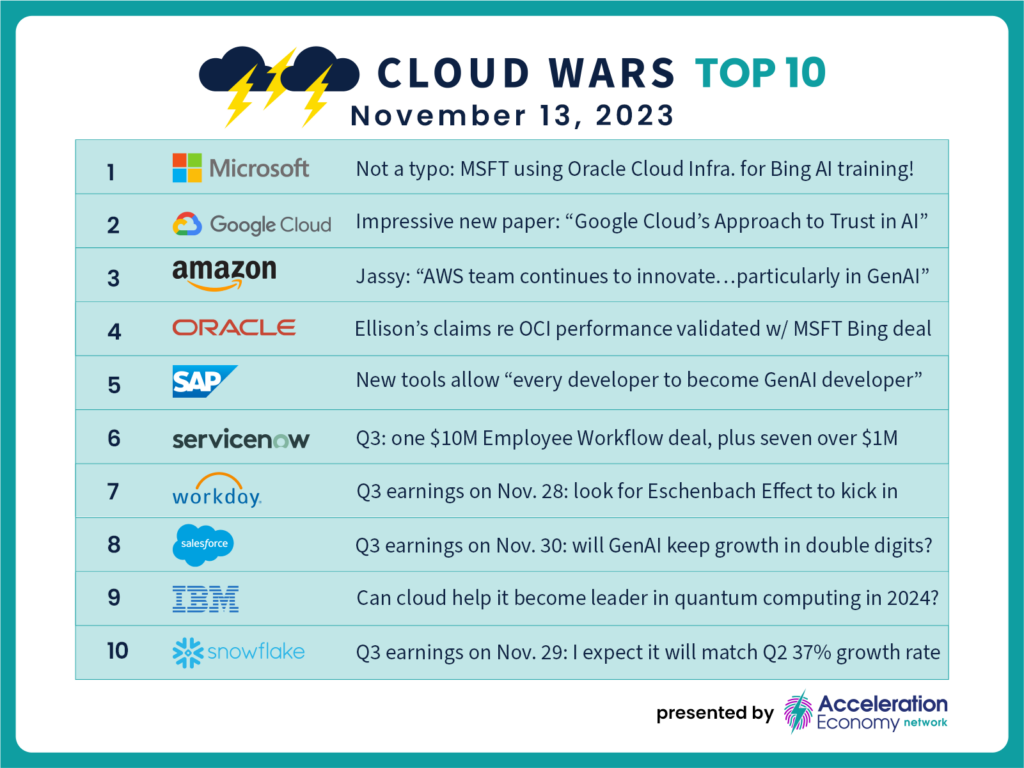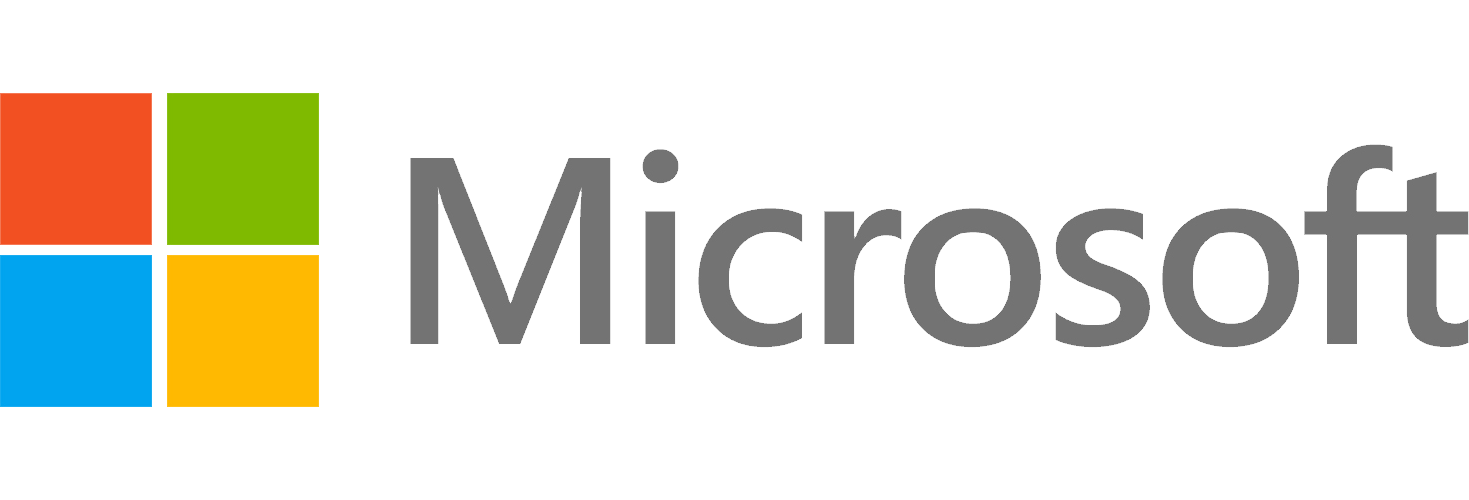
Even as their competitive battles encompass opportunities measured in tens of billions of dollars, Oracle chairman Larry Ellison and Microsoft CEO Satya Nadella are redefining the rules of competition and collaboration for not only the entire tech industry but also the broader business world as well.
It is wildly ironic — or is it? — that this extraordinary phase of the Generative AI (GenAI) Revolution is being written by two leaders who defy all the stereotypes that typically swirl around tech-industry disruption:
- Neither is a 20-something exploding out of obscurity onto the scene to turn the entrenched fuddy-duddies on their heads: In August of next year, Ellison will turn 80 and Nadella will turn 57.
- Neither felt compelled to leave a huge global corporation to disrupt the status quo: Ellison founded Oracle 46 years ago, and Nadella has spent 31 of his 33 years at Microsoft (following two years at Sun Microsystems…a company that Ellison and Oracle would later acquire).
- Only one is a college dropout (Ellison).
- Neither was a tech-centric founder who at some point could not handle the broader demands of business strategy and execution: Both were trained as technologists, and both rapidly complemented their genius in that area with world-class business acumen. While not a founder, Nadella was intimately involved in many of Microsoft’s most-successful and -valuable products.
Yet here, as GenAI turbocharges the greatest growth market (the cloud) the world has ever known, two “corporate lifers” with deep-tech expertise are profoundly changing how the business world will behave for the next few years not because of their computer-science wizardry but because of their bold, courageous, and customer-centric vision for the future.
Now, I realize that’s a pretty bold claim. But look at the early fruits of The Larry and Satya Show (and I’m giving Ellison top billing in that show name because of his 46-year tenure in this industry versus Nadella being in it for “only” 33 years).
1. True Multi-Cloud — Far Beyond What Any Other Vendors Have Done
To say that Microsoft and Oracle compete savagely against one another in many areas is undisputable: They battle daily for many billions of dollars in customer purchases of cloud-based GenAI, infrastructure, enterprise apps, databases, analytics, cybersecurity, and more. And yet in spite of that — but also in part because of it —Ellison and Nadella sat down at Microsoft headquarters two months ago to announce an absolutely unprecedented multi-cloud partnership enabling customers to, in effect, work seamlessly across and within both clouds.
During their conversation — which I analyze in detail in “How Larry Ellison and Satya Nadella Have Rocked the Tech Industry” — both iconic leaders freely owned up to that intense competition and made zero attempt to pretend that it would abate.
But — they also focused on the ultimate benefits customers would gain via this partnership as Nadella and Ellison were able to see beyond their head-to-head battles to the higher-value opportunity to create vast new capabilities and better business outcomes for their customers.
In an industry where for too long vendor-versus-vendor competition has resulted in difficulty and complexity for customers, that customer-centric approach took vision, it took courage, and it took persuasive power — and fortunately, both Nadella and Ellison have those qualities in abundance.
And I believe their partnership will ultimately lead other tech companies to follow suit.
2. For Microsoft, Proof and Payoff Came Quickly
About five weeks later, on Microsoft’s fiscal-Q3 earnings call in late October, Nadella was asked to describe what accounted for the reacceleration in Azure’s growth. Here’s what Nadella said, as taken from my Oct. 26 analysis headlined “Microsoft Cloud Shocker: Oracle Major Driver Behind Blowout Q1 Numbers!”:
“If you just take Azure and try to characterize where’s the growth for Azure coming from, or what’s sort of driving our Azure numbers, there are three things all happening in parallel,” Nadella said.
“For example, take cloud migrations. A good reminder of where we are in even the core cloud migration story is the new Oracle [multi-cloud] announcement. Once we announced that the Oracle databases are going to be available on Azure, we saw a bunch of unlock from new customers who have a significant Oracle estate that have not yet moved to the cloud because they needed to rendezvous with the rest of the app estate in one single cloud. And so we’re excited about that.”
Yeah, and I’ll bet they’re more than just “excited”! The announcement was made Sept. 14, and Microsoft’s fiscal first quarter ended Sept. 30 — so that “bunch of unlock from new customers” began to take place in significant volume in about 16 days!
So here we have the CEO of Microsoft saying that a primary driver of growth for his core cloud business was the new partnership that allowed customers to more easily tap into the products of a major competitor: Oracle!
I believe other CEOs — both inside the tech industry and outside it — will look at this and think long and hard about whether the old rules governing competition and collaboration are still valid and helpful, or if they’re outdated and stunting.

3. Ramping that Precedent-Busting Partnership to Astonishing New Levels
Okay — so Ellison and Nadella agreed to play nice for the ultimate greater benefit to customers, and it’s paying off nicely so far for Microsoft. But at another level, those two leaders were simultaneously planning to shatter some more precedents and traditions and taboos as they announced just last week that Microsoft had selected Oracle Cloud Infrastructure to do AI inferencing and training for Microsoft’s Bing conversational search. Thus, in effect, Nadella and Microsoft — the combo that triggered the GenAI Revolution one year ago with the ChatGPT announcement —are admitting that Oracle cloud infrastructure is at least as good and perhaps even better than Microsoft’s and OpenAI’s for this particular type of AI training.
That is a stunning admission — truly extraordinary! So why in the world would Microsoft do and say such things?
Well, from my analysis late last week of that AI-training deal, here’s the key reason, as cited in a press release, from Microsoft global head of marketing for Search and AI Divya Kumar:
“Microsoft Bing is leveraging the latest advancements in AI to provide a dramatically better search experience for people across the world. Our collaboration with Oracle and use of Oracle Cloud Infrastructure along with our Microsoft Azure AI infrastructure will expand access to customers and improve the speed of many of our search results.” (For the full story on that latest chapter in The Larry and Satya Show, please see “Larry Ellison Teased $1.5 Billion AI-Training Deal with Hyperscaler: Is It for Microsoft Bing?“)
Ah yes, there’s that customer-centric thing again: “provide a dramatically better search experience for people across the world” and “expand access to customers and improve the speed of many of our search results.”
It seems so easy, so logical — right? So why aren’t all the Cloud Wars Top 10 companies doing similar things?
Final Thought
One detail that should be noted is that in some way, all this ground-breaking stuff out of The Larry and Satya Show got started about four-and-a-half years ago when the two companies announced a “cloud interconnect” agreement that was an important but fairly humble first step to see what might be possible.
Apparently, that mostly technical agreement was hugely successful because it’s paved the way for the two recent and truly world-shaking initiatives from Microsoft and Oracle as described above.
So I intend to become a must-watch viewer of The Larry and Satya Show, and can’t wait to see what they’ll come up with next as these two visionary icons offer compelling examples for how leaders in every industry must summon the wisdom and the courage to disrupt how they currently operate to meet the needs of our rapidly and intensely changing world.
Discover how AI has created a new ecosystem of partnerships with a fresh spirit of customer-centric cocreation and a renewed focus on reimagining what is possible. The Acceleration Economy AI Ecosystem Course is available on demand.










